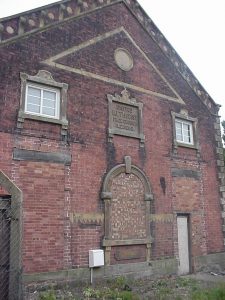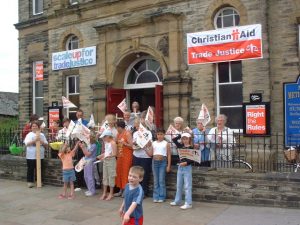In Vera Garland’s book Echoes and Reflections, amateur historian and staunch elder of the Wesleyan Chapel, Nellie Minett, wrote that Methodism had made a great impact on Methley. There indeed had been a significant impact by the different non-conformist sects, there were five chapels constructed from the mid nineteenth century. Three of them were concentrated along a 400 metre length of Main Street. The Wesleyan and remaining worshipping Chapel, The Free Church or Zion Chapel now disused in Holmes Yard and the Primitive Chapel.
How did this religious fervour emanate? Was it dissatisfaction with the established church, or could it have been something to do with the stark social conditions of the time. More than likely, a combination of both these factors allied to the developing ability of resourceful groups of people to meet and respond to the impassioned evangelical messages of those times by building houses of worship, a role that had previously been limited to the powerful and wealthy.
Of the two satellite chapels, one at Scholey Hill had been used as a Meeting Place and officially rented in 1855 from the Mexborough Estate. The Primitive Chapel at Methley Junction was built by the mineowners who built the rows of terrace houses for their new workers.
The sacrifices made in building these places of worship would have been worth it to the founders who would see in their early years healthy congregations and full attendances at Services and Bible Classes.  An indenture for the purchase of the land to build the Zion Church in Holmes Yard records names that have been common to this village both before the inception of the Chapel and to this day. Not a penny was borrowed for the construction and funding was made by gifts and collections from Meetings at the corn mill and butchers slaughter house where earlier services were held.
An indenture for the purchase of the land to build the Zion Church in Holmes Yard records names that have been common to this village both before the inception of the Chapel and to this day. Not a penny was borrowed for the construction and funding was made by gifts and collections from Meetings at the corn mill and butchers slaughter house where earlier services were held.
On my occasional visits to the Wesleyan Chapel , I am always drawn to to the upper balcony (typical of so many chapel designs) and wonder what it would take to restore the whole upper area including organ and pipes. What a positive effect that would have on attendances and the village as a whole. I can remember as a youngster calling at the Primitive Chapel which had by then been converted into a sewing factory. The pity is we appear unable to develop a clothing business these days to put in ANY building. The Primitive and Ebeneezer Chapels broke away in 1814 they practised a more stern method of worship claiming that the Wesleyans were too much like the Church of England Service.
What brought about the contraction and demise of so many Chapels? It would seem that the village of methley reflected the country as a whole, when all churches were decimated after the Great War. A lot of men were lost and many attitudes were changed, a trend which continued to the Second World War. More recently we see that affluence and consumerism do not always go hand in hand with religious devotion and the Chapel as with all churches has to continue to confront what is possibly its greatest challenge.
It is good to see, that since those anxious days leading up to convergence of the various sects in 1932 that the congregation at the Wesleyan Chapel is ‘Alive and Kicking’ and able to look forward to the future with confidence.
|
||